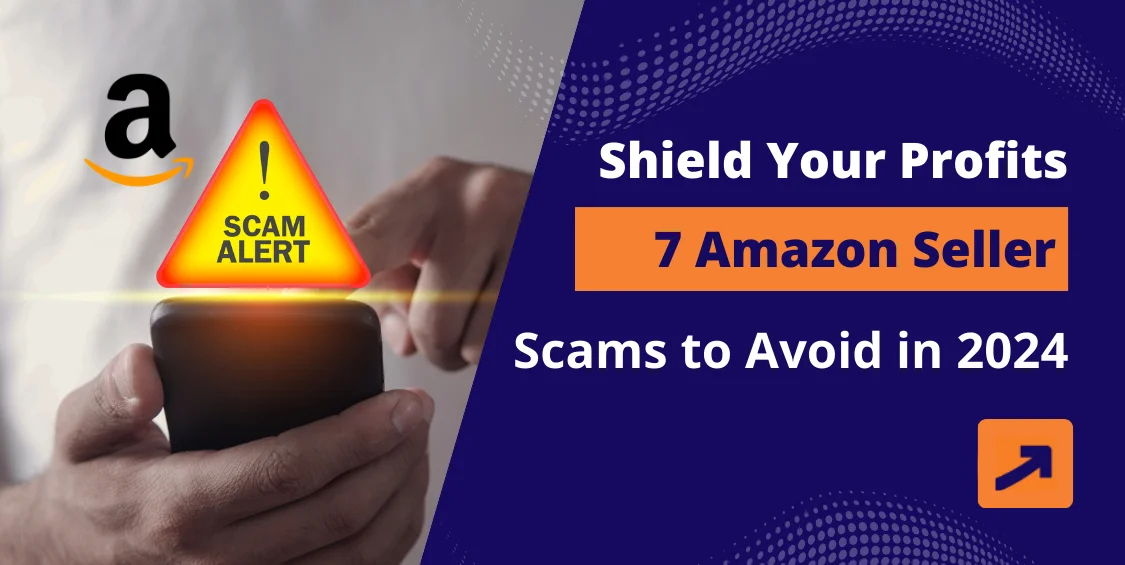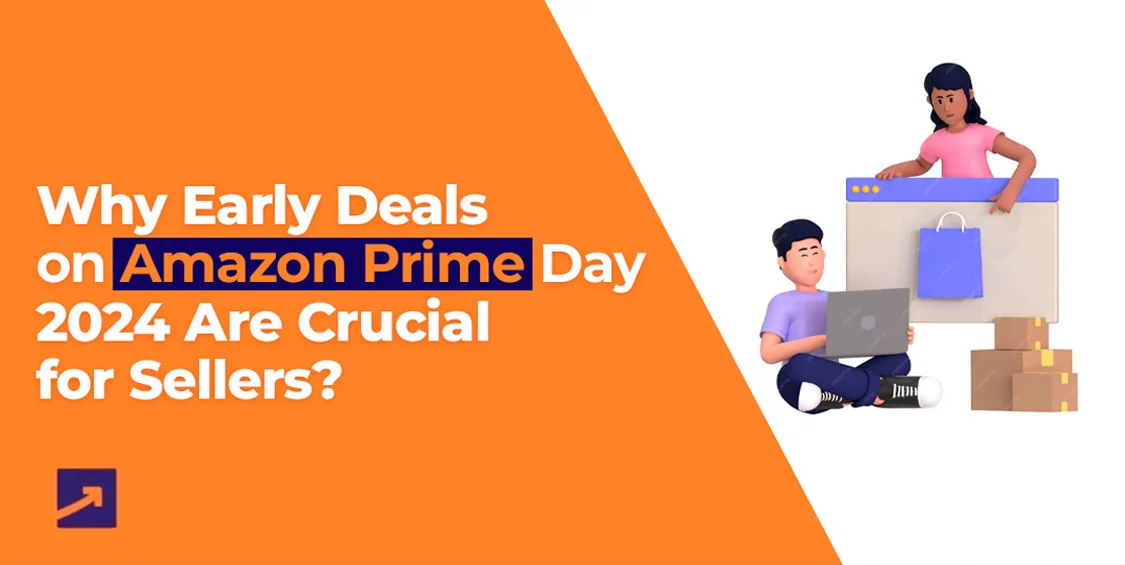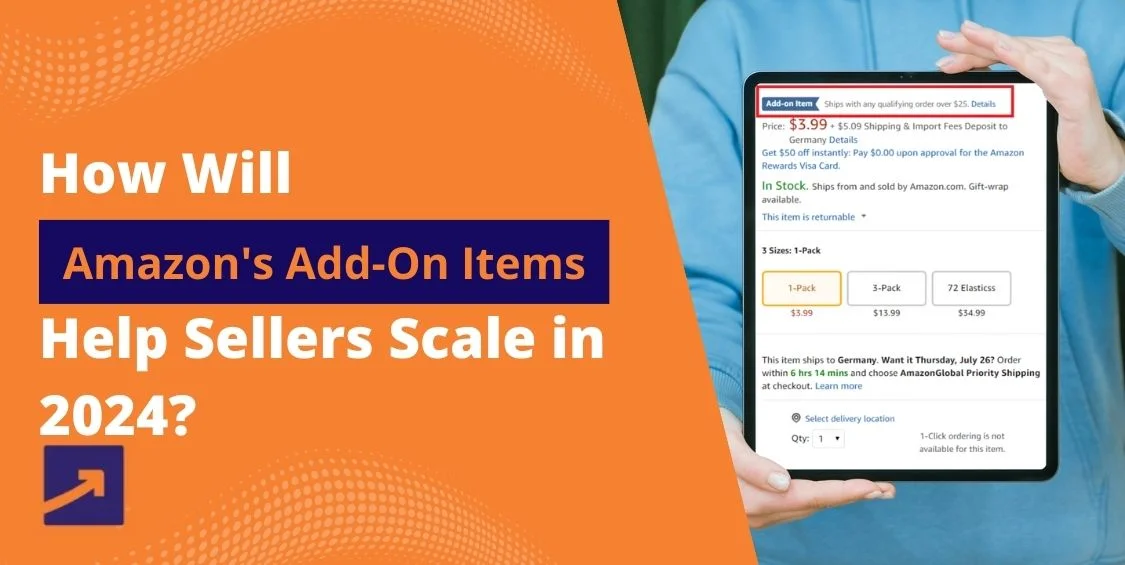Being able to sell on Amazon is a great way to make money online because of how profitable it is and how much you can earn. According to research, 63% of Amazon vendors turn a profit in the first year. A variety of fraudulent schemes have proliferated alongside the possibility of substantial riches.
Amazon is a behemoth in the crowded world of online retail, giving vendors access to customers all over the world. But, as the saying goes, “with great opportunity comes great risk,” and the possibility of fraud is a major obstacle for Amazon vendors. It is critical for sellers to remain educated and watchful as we enter 2024 in order to protect their e-commerce businesses.
How Scams On Amazon Work?
Amazon seller scams are very common since making an account is easy and there isn’t much of a barrier to entry. This puts innocent Amazon customers at risk. Their cunning language skills and platform penetration have allowed them to thrive for a long time. They keep con artists on their payroll by coming up with new schemes as soon as old clever scams backfire.
In their Brand Protection Report, Amazon announced that they had removed or blocked 99% of items that were thought to be fraudulent, infringing, or involved in some other form of exploitation in order to safeguard its vendors, customers, and sellers from fake products.
Though they may employ a variety of tactics, all Amazon scams have a common objective: to gain financial gain by stealing your personal information. An individual posing as an Amazon representative may contact you about an upcoming order or a problem with your account. Deceiving you into readily divulging your account details is their goal.
7 Types Of Scams On Amazon:
1. Account/Listing Hijacking Scam:
If a fraudster gains access to your Amazon seller account and starts using it, they have committed account hijacking. One of the first things a fraudster can do with your account is change your password or email address in order to prevent you from accessing your account.
Scammers engage in listing hijacking when they offer false or counterfeit goods that look and sound like the real thing. This takes place just under your product listing, leading customers to believe they are purchasing from you when, in fact, they may be purchasing a fake product.
To trick customers into buying from them instead of you, the real seller, these shady merchants will “list a product” under your ASIN. They take orders but never deliver the goods; all they do is provide a false tracking number.
2. Phishing Scams:
An unsuspecting user might be contacted by phone or a phishing email claiming that their account has made a large purchase without their permission. Con artists frequently employ URL phishing tactics to trick you into believing the scenario is genuine. In their email, they provide a phone number to call or a link to a phoney Amazon website in order to complete the purchase.
Scammers posing as Amazon representatives may trick consumers into giving over their credit card information by sending them links to fraudulent websites or having them contact a toll-free number. Naturally, they will immediately deplete your bank account if you divulge your details.
3. Mystery Box Scams:
Although it may sound like a thrilling idea to purchase a mystery box on Amazon, a large number of these postings are really frauds. You can wind up obtaining totally different products than what the listing offers, even if the listing has a ton of positive ratings.
Claiming to include products that are significantly more valuable than the box’s price
Various price points, with a higher price point increasing the likelihood of receiving a top-tier item.
All too frequently, the listing and reviews make the offer seem too good to be true, and you end up with inferior-quality things at a lower price.
4. Payment Scams:
Scammers endeavour to persuade you to pay for your purchases outside of Amazon’s secure network; this is a common and basic payment scam. If you pay them using wire transfer, PayPal, Western Union, or MoneyGram, you’ll get a bunch of extra items or discounts. Unfortunately, neither your money nor the things you ordered will be delivered if you believe their claims. These vendors will probably delete their accounts shortly after that. The fact that the transaction occurred outside of Amazon’s platform also means that the company will be of little assistance. Be extremely wary of anyone requesting payment through a third party provider, especially PayPal, since these scams are still common.
5. Fake Or Unauthentic Product Reviews:
Research referenced in Consumer Reports indicates that 42% of Amazon product reviews are not genuine. Several reviews are allegedly generated by AI bots as well. Unethical vendors use a variety of tactics to influence customer feedback. One way is to incentivize product promotion by paying individuals to submit false five-star evaluations. As a token of appreciation, clients enjoy savings on their next purchases. Some dishonest vendors even go to extreme lengths like paying someone to bombard rival businesses with nasty ratings.
Fake reviews can be identified by certain obvious indications. When the timestamps of the reviews show that several positive reviews were posted on the same day, that’s one red flag. Additionally, they could use wording that sounds artificially similar. You can tell if a reviewer is legit by looking at their profile.
6. Gift Card Scam:
The con artists behind the Amazon gift card scam will use phishing emails, texts, or phone calls to get in touch with you. A con artist posing as an Amazon representative will contact you to report an issue with your account. Next, the con artist will trick you into thinking that the only way to fix the problem is to buy Amazon gift cards and then provide the card details.
This scam may be executed as form of communications via email, phone, or text message from an imposter claiming to be at Amazon, misleading details regarding a problem with your account or requests regarding the details of Amazon gift cards.
The con artist will record your gift card details and then cut off all contact when you follow their directions.
7. Fake Account Suspension Notice:
In an Amazon suspension scam, con artists pose as legitimate Amazon employees or representatives and threaten to cancel or suspend your account until you pay a ransom.
After that, they’ll promise to assist you in reactivating your account and either ask for cash or your account information. Scammers with no affiliation to Amazon are actually behind these incidents.
Make sure the email or phone call is legitimate by contacting Amazon support before taking any action to prevent suspension scams. Also, make sure you’re following Amazon’s rules and seller code of conduct by reviewing them often.
Stay Vigilant To Protect Your Amazon Account:
If you want your Amazon business to last, you need to be aware of these typical seller scams and take precautions to avoid falling victim.
Always check the source of any email or phone call claiming to be from Amazon, and don’t ever give out your login information without first verifying their credibility. Both you and your company can be protected from falling prey to these scams if you remain watchful and adhere to Amazon’s regulations.
If you’re new to Amazon, or already have an Amazon Seller Central, enrol your brand into Amazon Brand Registry as well, to access all the brand protection tools offered by Amazon. Learn more about brand protection here, or contact our experts at AMZDUDES today!





